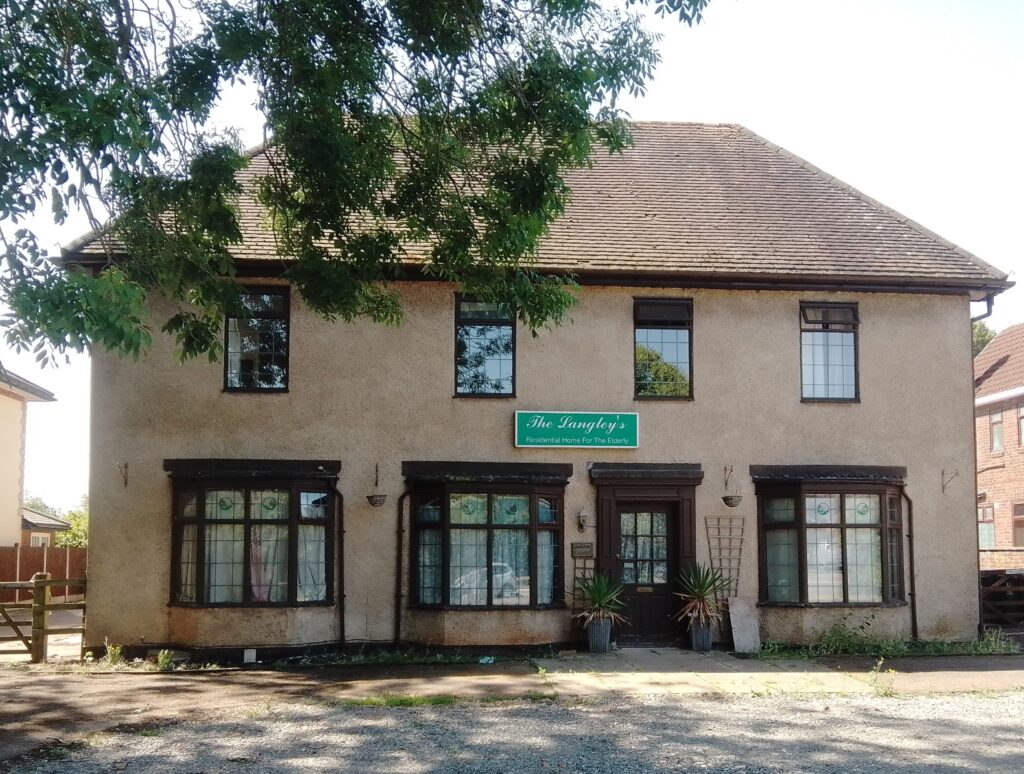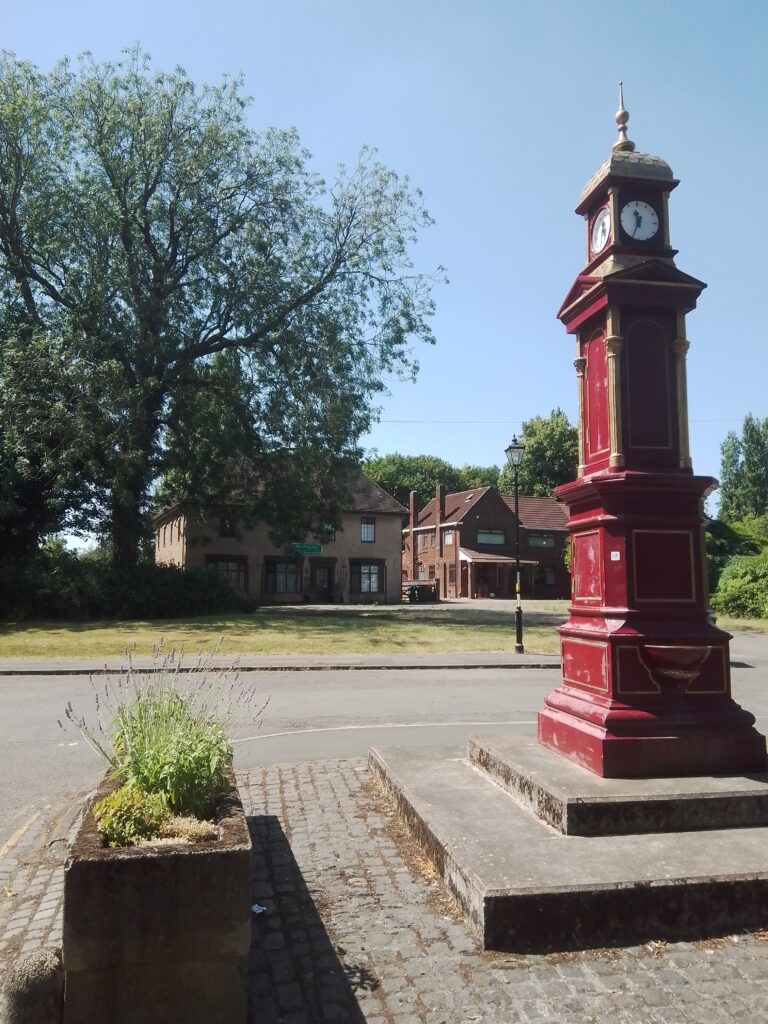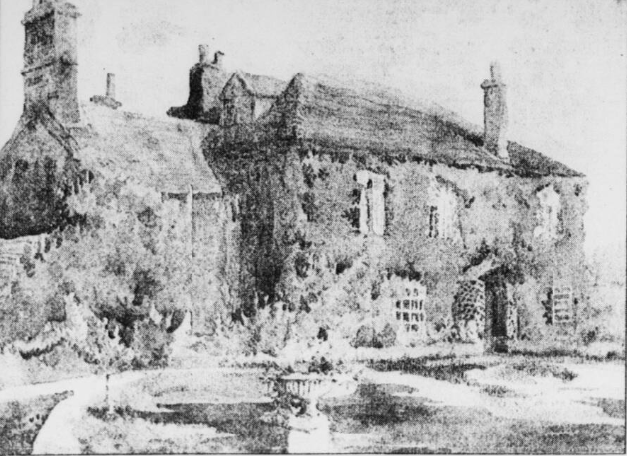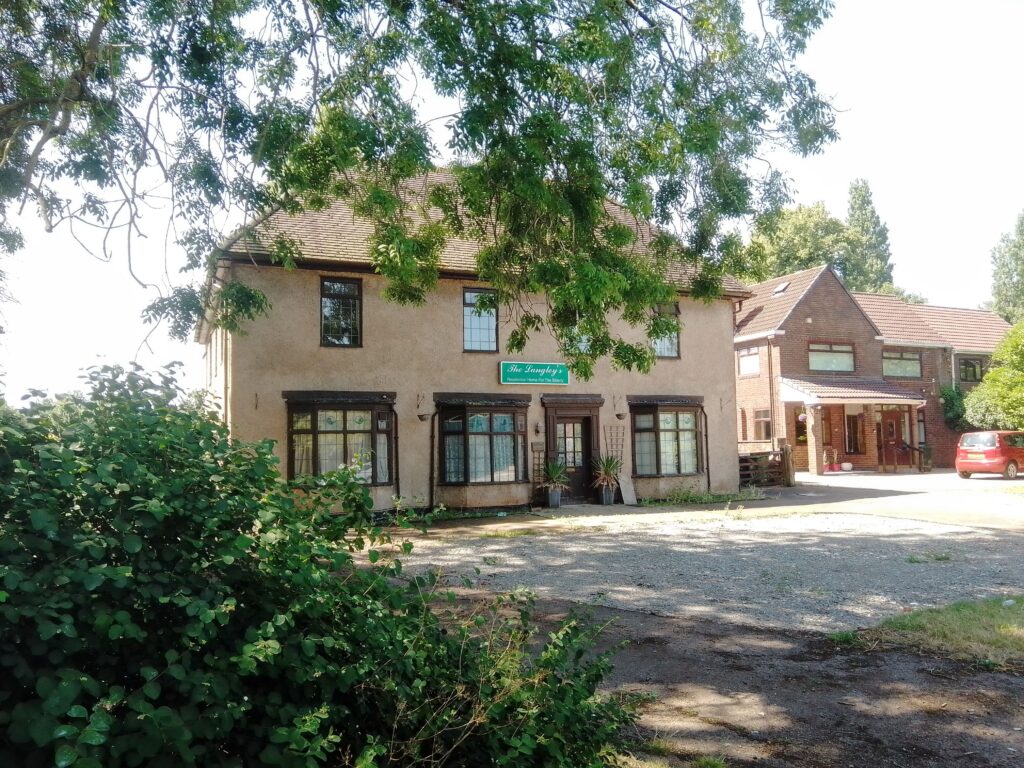
The Stoke Local History Group has raised issues about the proposed demolition of the Langleys, the oldest building in Stoke Green. This article is from the July edition of Jabet’s Ash, the newsletter of the Stoke Local History Group. It was written by the group’s chair, John Marshall, with research support from CovSoc historian David Fry.
A planning application has been made to demolish The Langleys, a locally listed house at Stoke Green, which is believed to date back to the 17th century.
Records suggest that the house, which has most recently been used as a care home, was built in about 1622 with extensive alterations and additions in the 18th and 19th centuries. During the 19th century it was divided into two properties, one known as The Laurels and the other as Ivy Cottage. But for much of the 20th century the two houses were known as The Laurels and The Langleys.
The building, which sits in the western corner of Stoke Green, close to the Joseph Levi Clock, was turned back into a single house in the late 1980s, and converted into a care home. The formal opening took
place in November 1989.

At the time of its conversion, details emerged about the history of the building. In 1988 owners Jeffrey Graham and his brother Leonard Rawnsley were said to be spending £30,000 converting the house into a retirement home. They became intrigued by the history of the property and told journalist Barbara Goulden, of the Coventry Citizen, that thick sandstone blocks were found beneath the plaster exterior, and inside the house were solid oak beams, old fireplaces and even remnants of daub and wattle in the walls.
Jeffrey Graham was told that the house was once known as The Bowling Green Inn, though this was not verified at the time or since. However, the Victoria County History says that a “Bowling Alley House at Stoke Green” was mentioned in 1641, with “a bowling alley itself, on the Stoke side of Gosford Green”, in 1671.
The Coventry Citizen report referred to Harry Sutton, an 85-year-old man, who lived in part of the house before the First World War. He confirmed that the house at that time was divided into two, one being The Laurels and the other Ivy Cottage.
“We lived in The Laurels which my parents rented from a theatrical family who I think came from Blackburn,” he was quoted as saying. “They toured the country but I remember going to see their productions at Coventry Hippodrome.”
A follow-up article in the Citizen mentioned Leicestershire farmer Robert Forman who inherited a watercolour painting showing how The Laurels looked in the 19th century. This painting (pictured below) shows a side view of the house.

Mr Forman’s great grandfather, Charles Penn, went to live in The Laurels in 1895. He was a Baptist minister at St Michael’s Baptist Church, formerly in Hay Lane, and had moved to Stoke with his wife Selena Comley and their three children, plus a niece. The Penn family’s most famous ancestor was William Penn, who founded Pennsylvania.
At the time of its restoration in 1989, the owners of the house confirmed that its original sandstone walls had to be re-covered and most of the original oak timber had to be replaced with mock beams. The property was also extended at that time and given a new two-storey east wing.
The new planning application says that the purpose of demolition would be to clear the site for a self-build house, subject to planning permission. The applicant’s heritage statement says that the existing house has had “extensive alterations” and “much of the original features have been lost over time to extensions, alterations, additions and replacement”.
It adds that although the property dates to the 17th century, changes have been “unsympathetic” and “diminished the overall quality and attractiveness of the heritage asset”. It claims that a replacement building would be of “high quality design and would potentially enhance the Conservation Area”, although it provides no details about a new building.

Local residents are currently discussing the planning application. Corrine Spencer of the Gosford Park Residents Association has been told that the existing house is in poor condition and would be very expensive to restore. Ann Wilson, a resident of nearby Stoke Park, suggests that one solution – if permission is given – would be to retain the shell of the existing building, or at least the frontage, to create a new home.
The Coventry Society is also considering the planning application and is yet to decide whether there are grounds for objection. They are studying a dossier of historic details supplied by David Fry, which has also informed this report.
□ The Coventry Citizen reports, referred to above, appeared on 26 May 1988, 2 June 1988, and 23 November 1989.
